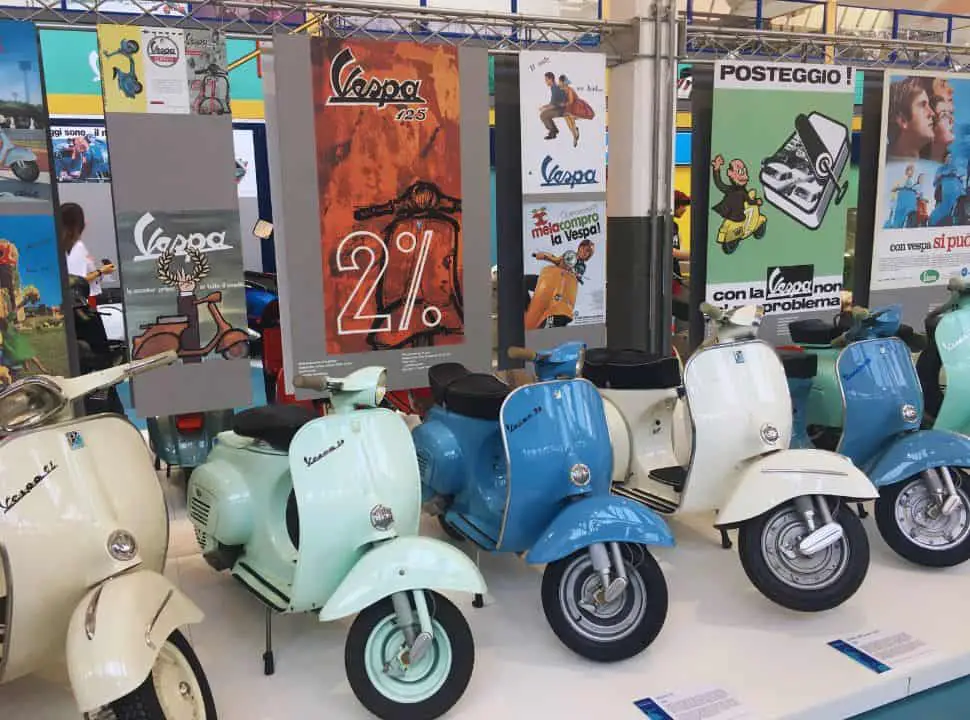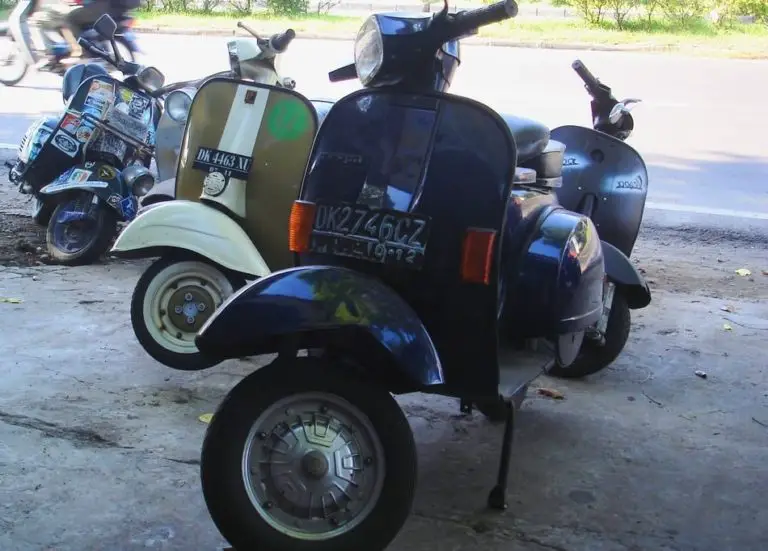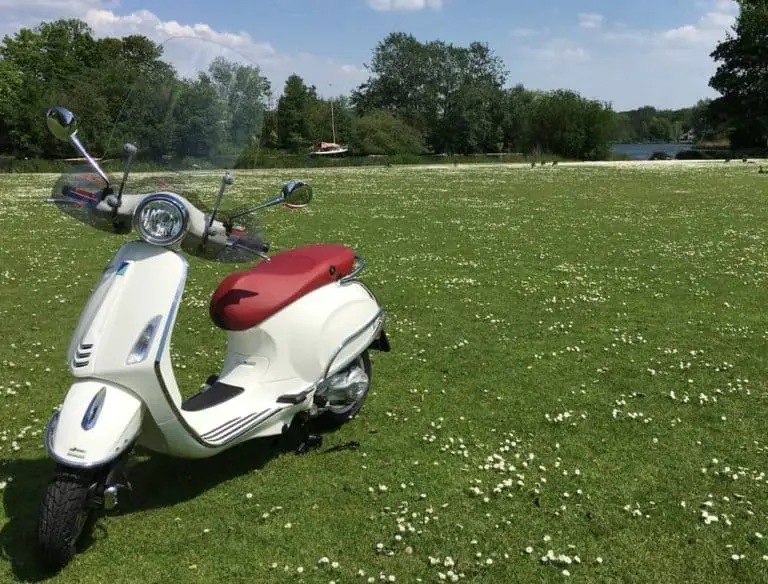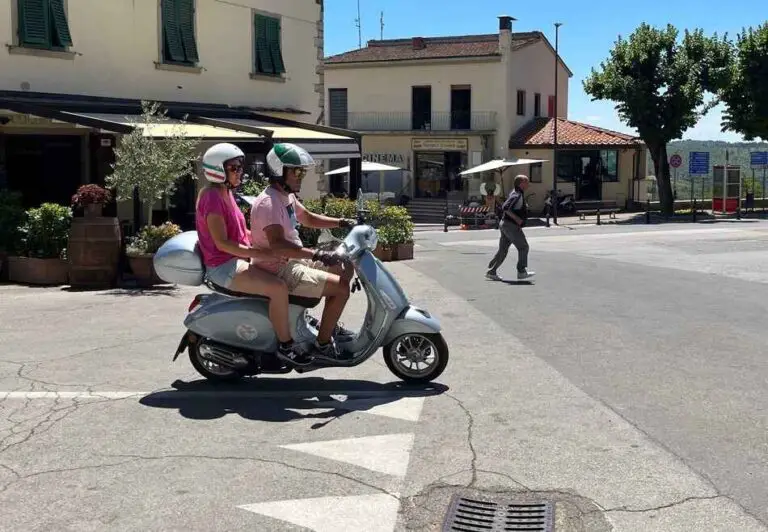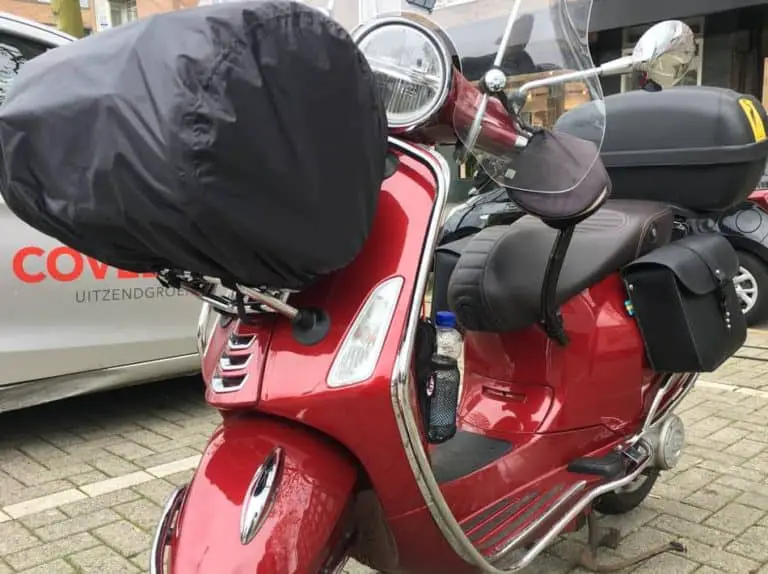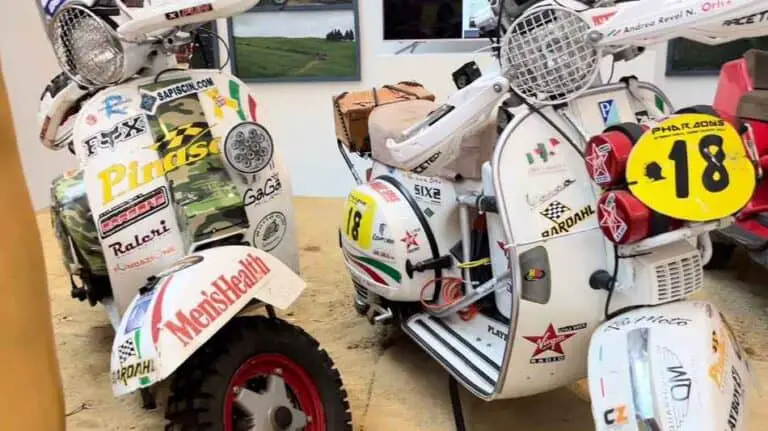Vespa Piaggio Museum Pontedera, The Birthplace Of The Vespa
When we were on a trip to Italy we finally had the chance to visit the Vespa Piaggio Museum in the city of Pontedera. Being huge Vespa fans, it had been on our list of things to do for many years
And best of all, it was far more than we expected. Once we entered the premises we could feel the history and love of this iconic scooter which has been popular for more than 7 decades.
Besides the Vespa, you can find a whole range of historical to modern vehicles of which Piaggio is the parent company such as Ape, Aprilla, Gilera, and Moto Guzzi.
Where is the Vespa Piaggio Museum?
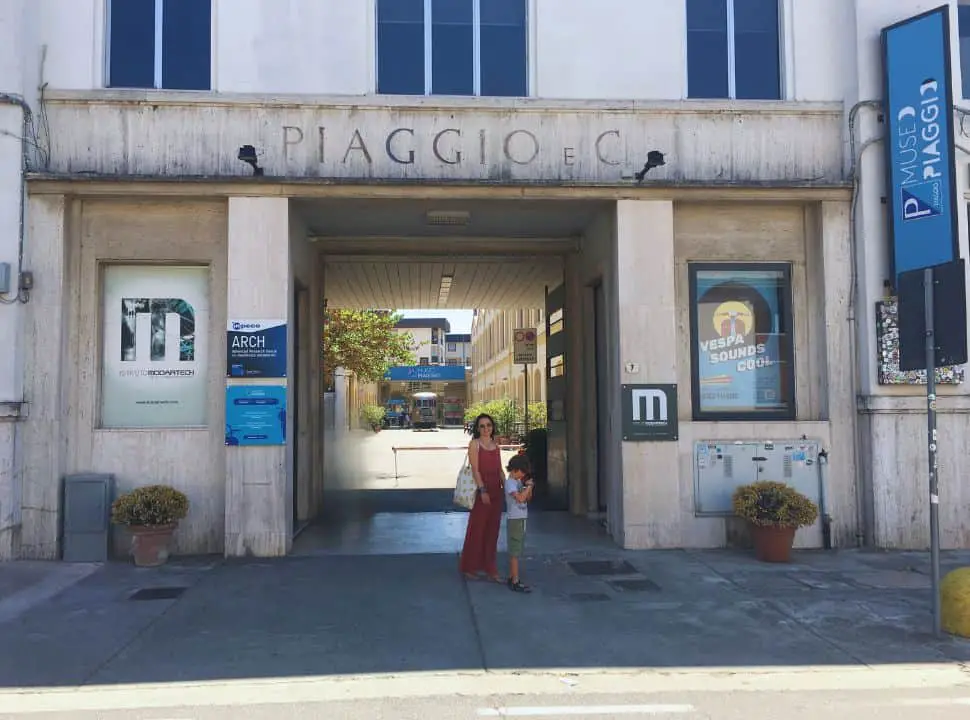
The Vespa Piaggio Museum is located in the Piaggio factory in Pontedera, in the province of Pisa in Italy.
At this very spot of the museum Enrico Piaggio and the aeronautical engineer, Corradino D’Ascanio created the Vespa in 1946.
The former tooling shop, which was one of the oldest buildings in the factory made way for a museum in 2000. Later in 2018 they beautifully renovated the new Piaggio Museum. With 5000 square meters and 350 exhibited pieces, it is one of the largest Italian museums showcasing two-wheeled vehicles (museopiaggio.it).
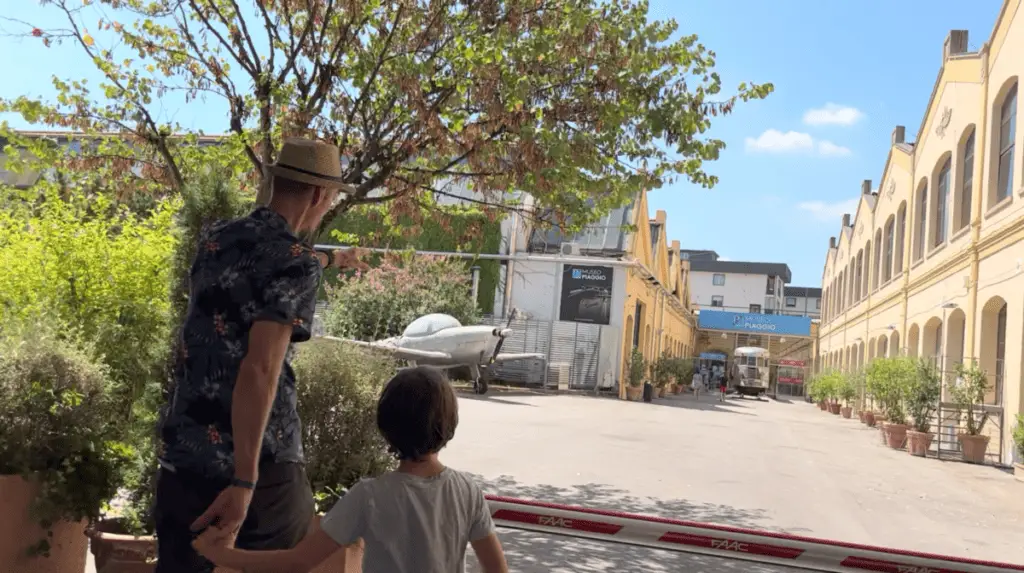
The Piaggio Museum is very easy to reach by car. The parking area is just behind the entrance of the industrial complex. It’s a 30-minute drive from Pisa (great to visit after admiring the leaning Tower of Pisa) and 1 hour from Florence.
Don’t confuse this museum with other Vespa museums in Italy. The Museo Vespa in the center of Rome is specifically about Vespas.
Address:
Museo Piaggio
Viale Rinaldo Piaggio 7
56025 Pontedera PI, Italy
Historical Value of the Piaggio Museum
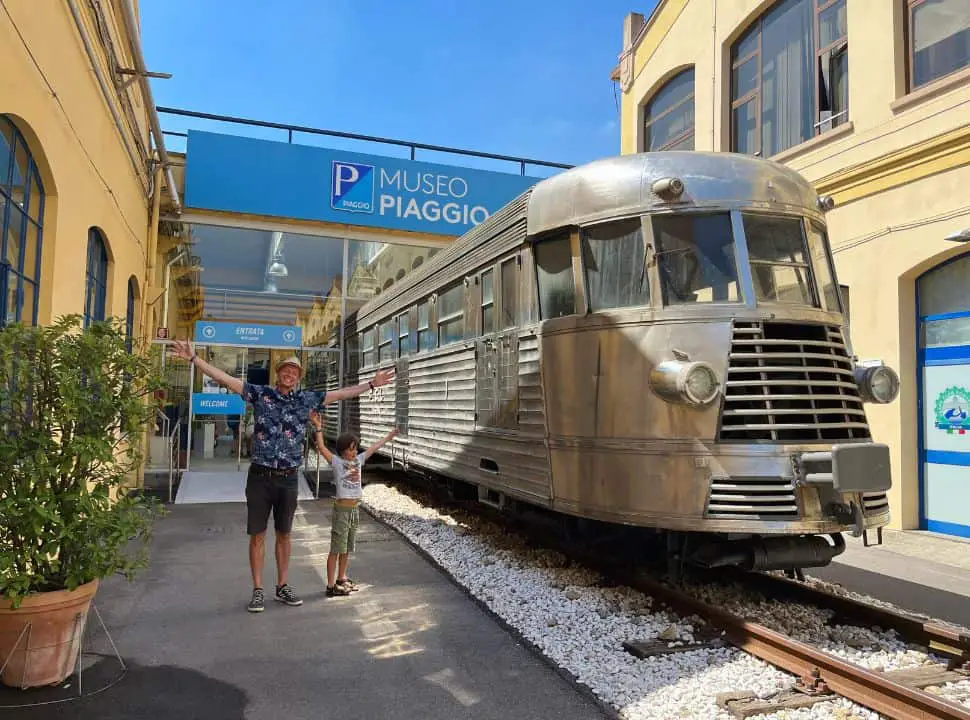
Whether you are a Vespa fan or not, this museum will interest anybody who appreciates historic vehicles but also those who are intrigued about the development of one of the oldest Italian companies.
Piaggio has played an important part in Italy’s industrial development of transportation. They’re famous for their innovative ideas.
While Piaggio is worldwide known for the Vespa, before this scooter was even created, Rinaldo Piaggio was in the rail sector and aviation.
Eventually, in the early 1920s, he opened the factory in Pontedera where they built almost anything that had to do with transportation such as cableway cars, trams, trucks, and trolley buses. (museopiaggio.it)
This is the point when the successful history of a great Italian company started.
In 1930, together with the engineers Corradino d’Ascanio, Giovanni Casiraghi, Giovanni Gabrielli, and Giovanni Pegna, Piaggio was even able to create one of the first helicopter prototypes.
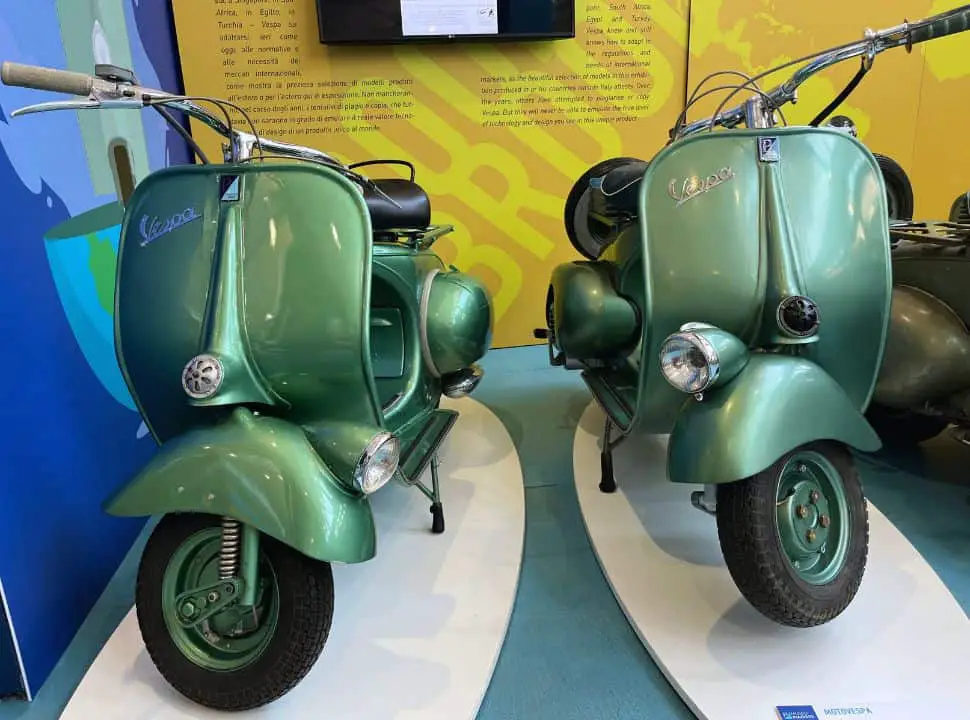
The creation of the Vespa
With such a history of transportation, it came as no surprise when Rinaldo’s son, Enrico Piaggio came up with a genius idea to create an affordable and practicable vehicle that had aeronautical elements.
In 1944, when Italy was still recovering from the war, Piaggio designed several scooter prototypes which eventually led to the Vespa 98.
You might think that a Vespa scooter wouldn’t have a huge impact. But at that time it pretty much changed the Italian history of transportation. Suddenly many people were able to afford a vehicle. This enabled them to go on trips, meet up and most of all enjoy a sense of freedom.
Something that until today is one of the images Vespa still portrays.
The Piaggio Museum ensures to document the history of the Piaggio group together with how they have been able to overcome and if not thrive during changes of time.
What to expect at the Vespa Piaggio Museum
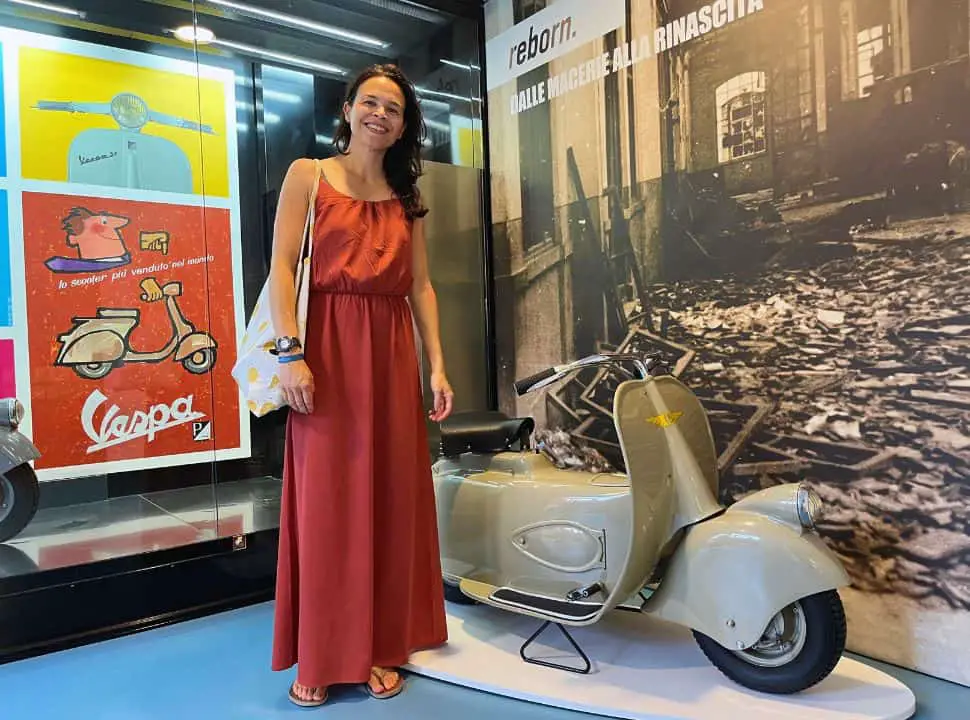
In the museum, there are 3 exhibition halls. The largest holds all the Vespa models ever made, including the MP5 (also known as Paperino). This is the only place where you can find this prototype made in 1946.
Besides Vespa scooters, the museum has a beautiful historical archive where you can find valuable documents, drawings of designs, and pictures of events that show Vespa and its role in social and economic trends.
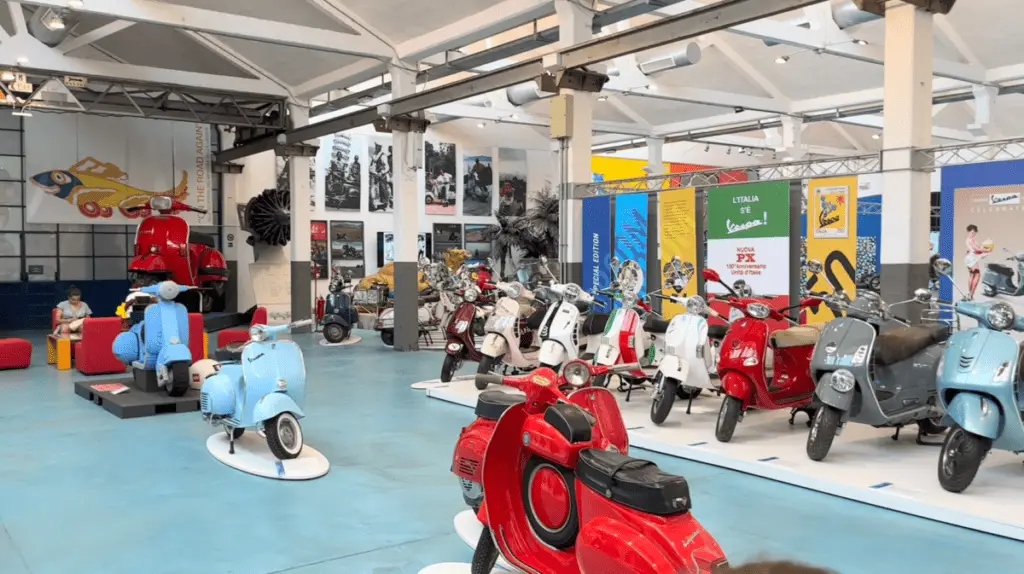
Further back in the area, you will even find the Vespas who have ridden through various continents. Not only are the stories of the Vespas inspiring but it shows time and time again the kind of cultural impact this iconic scooter has had.
The museum has displayed all the Vespas perfectly, depicting to us the fascinating journey of innovation, design, and impact of this eye-catching scooter. From the very beginning until today’s modern life.
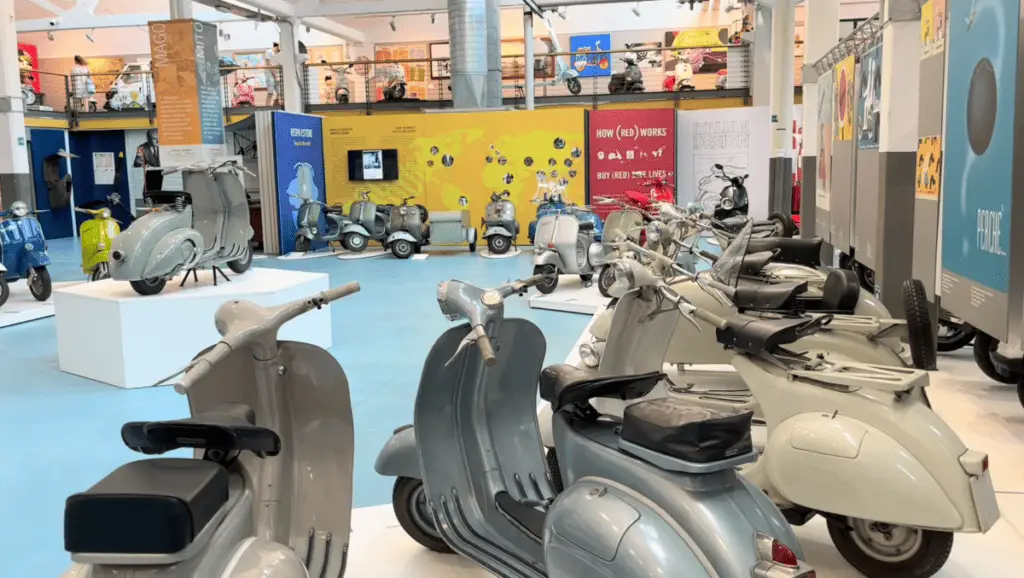
When we entered the Vespa exhibition hall, we just didn’t know where to start. We felt like we were all over the place😅 It just felt unreal to be able to see rare classic Vespa models in real life.
In the other two areas, Piaggio has displayed other historical vehicles that have been created by them such as the Ape and mopeds.
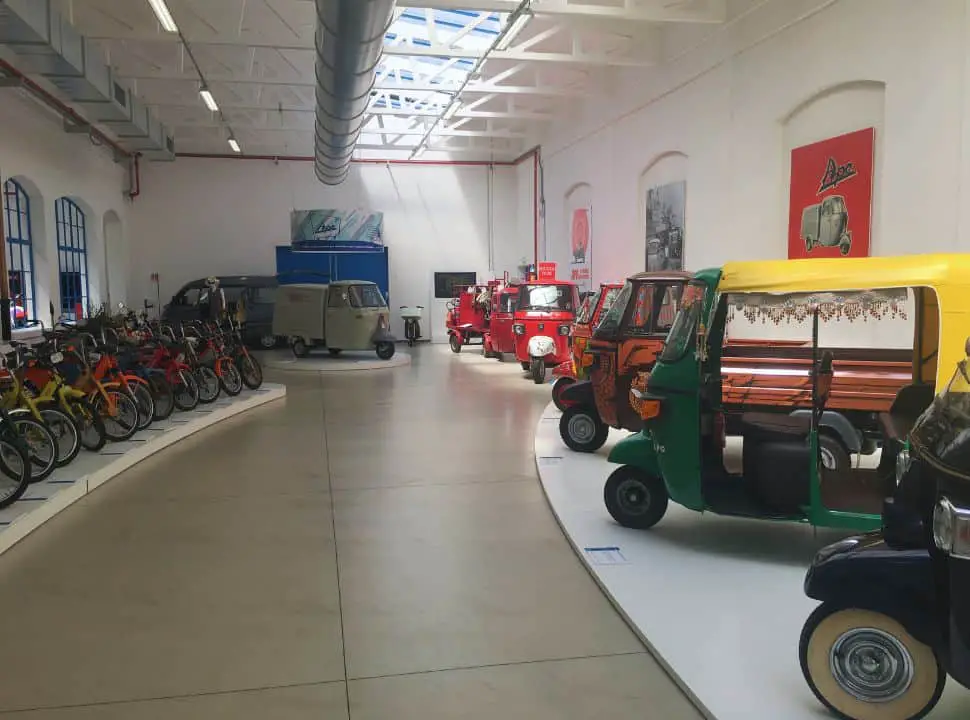
Additionally, there is a huge collection of motorcycles from Apprilla, Gilera, and Moto Guzzi. This ranged from classic motorcycles to modern speed machines.
It is really impressive to see the huge evolution motorcycles have made over time.
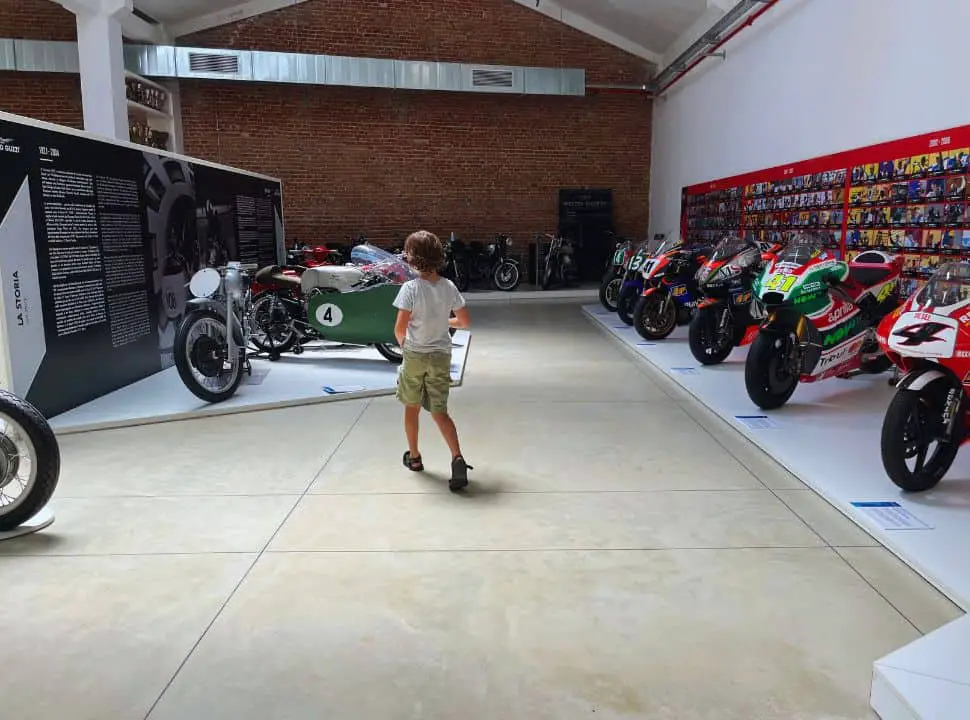
The Piaggio Museum Permenant Collection
Besides the wide range of Vespa scooters, the museum also displays other objects that are related to Vespa, making it more fascinating to see what kind of impact it has made worldwide.
Walking through the museum it becomes more evident how important the introduction of the Vespa was for the Italians after the Second World War. It was a practical and affordable mode of transportation.
The innovations and changes of the Vespa which always met the riders’ needs are what made Vespa so successful. The rich history of this eye-catching vehicle is evident in the museum’s collection.
Some themes of the museum’s permanent collection are:
Vespa Scooters
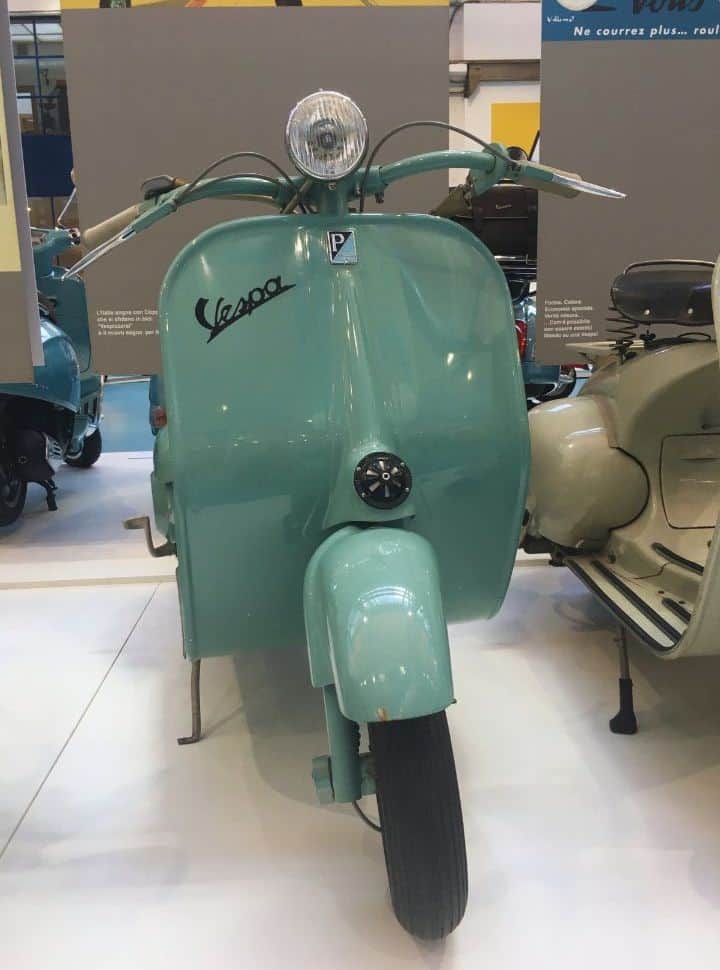
As mentioned earlier this museum holds all the Vespas from the very beginning till today. The highlight of our visit was seeing rare and iconic Vespas in real life such as:
- MP6 (1945)
- Vespa 98 (1946)
- Vespa 125U (1953, the first Vespas with a headlight on the handlebar)
- Vespa GS (1955),
- Vespa 90SS Super Sprint (1966 with spare wheel on the floor panel)
- Vespa Rally (1976)
- Vespa Cosa 200 (1988, not a success and therefore hardly seen today)
Special Edition Vespa Models
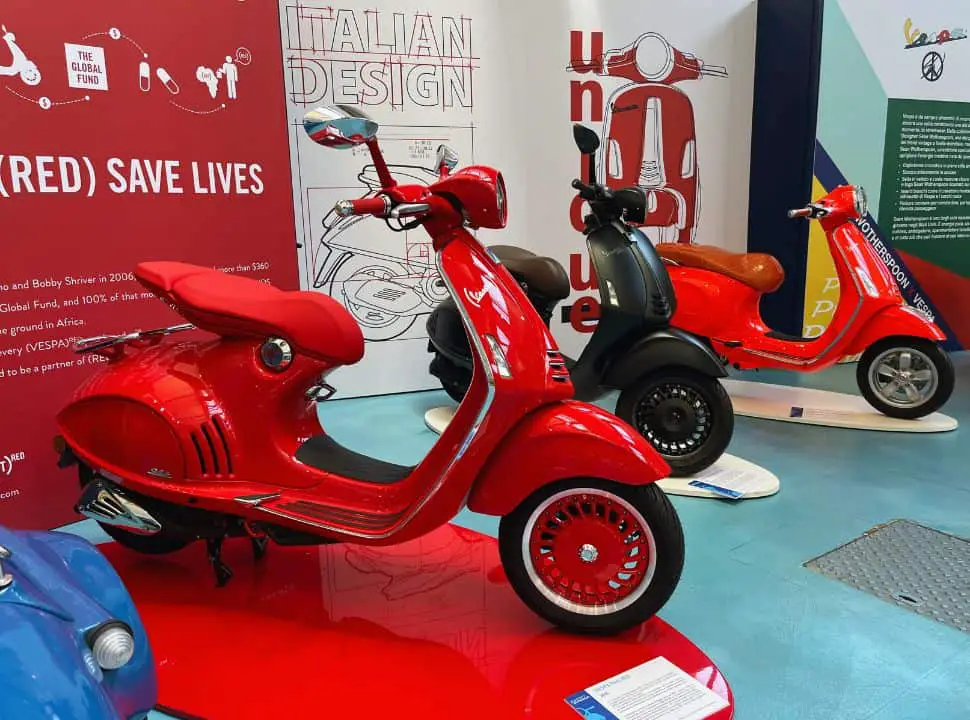
If you ever wanted to see the special edition or collaboration Vespas then you can see them in full display here. Such as the:
- Vespa (red) – A Vespa 946 of which sales of which will go towards
initiatives fighting AIDS, tuberculosis, and malaria - Vespa Armani – Beautiful black Vespa 946 made in collaboration to celebrate Italian style
- Vespa Sean Wotherspoon’s – The most colorful primavera Vespa model that reflects fashion and style
- Vespa Justin Bieber – A bright white Vespa 946
- Vespa 70 years – A golden like Vespa primavera made to celebrate Vespa’s seventieth birthday
Vespa Art, Fashion & Media
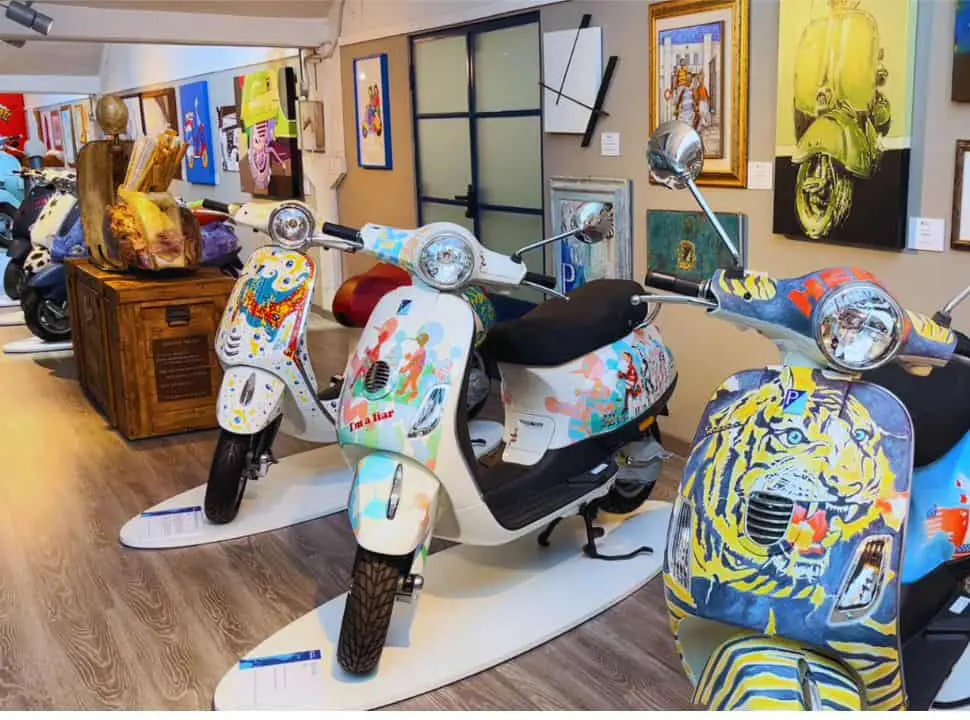
Climbing up the stairs of the museum we found ourselves at a very colorful section where Vespa has been used as an artform.
Here you can find paintings, and sculptures, but also painted Vespas which took part in the ‘Vespaarte’ competitions organized by Piaggio.
Vespa Racing
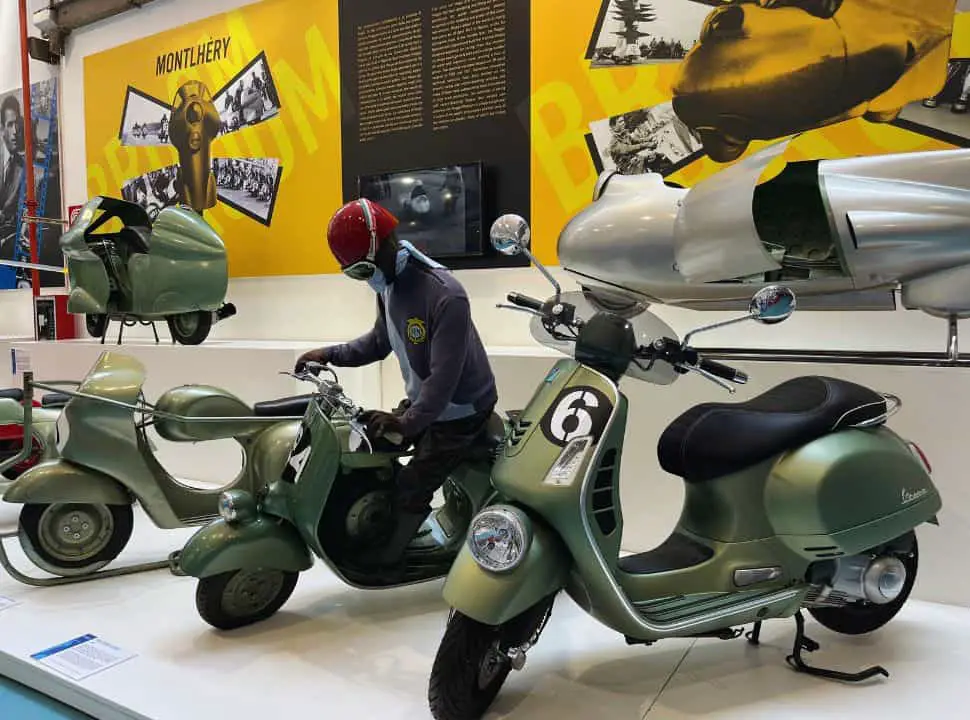
The Vespa took part in racing and off-road racing as soon as it was launched in 1946. Piaggio had a whole special team that tested the newest innovations to create the fastest Vespa ever.
The museum has devoted a special part to the rich history of Vespa racing. Here you can see how models changed over time. Naturally, they have included the most famous racing Vespa. The classic Sei Giorni from 1951 and the newest from 2017.
Vespa Travel and Rallys
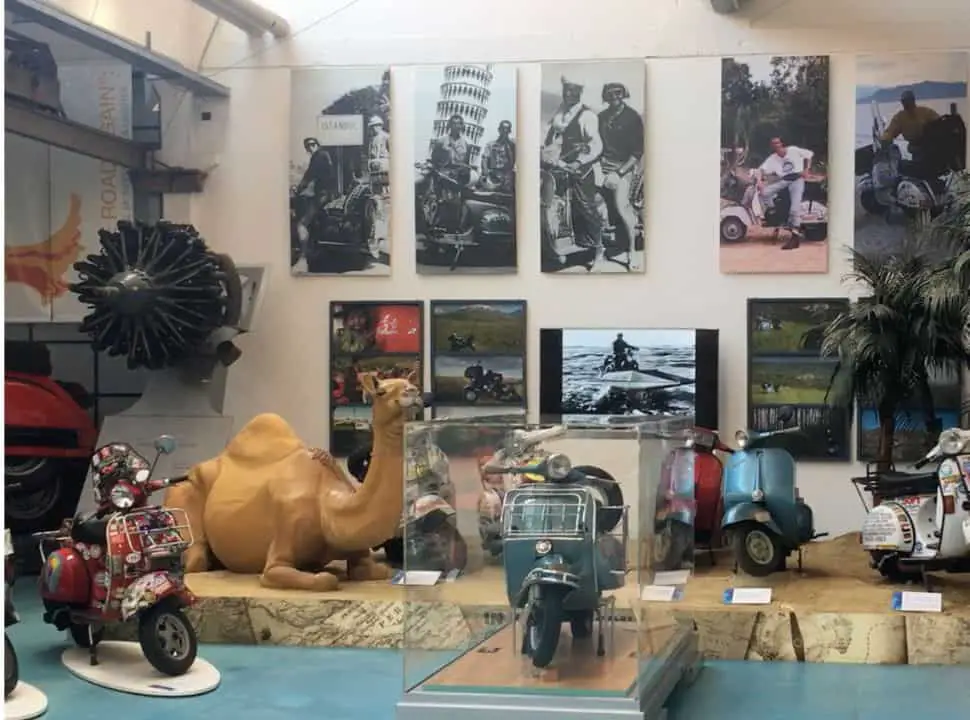
There are many stories and books written about adventurers who took their Vespa to almost every corner of the world.
A couple of these Vespas are from Giorgio Bettinelli who conducted many trips on a Vespa PX such from as Rome to Saigon in 1992 and from Alaska to Terra Del Fuoco in 1997.
Vespa Technical Development
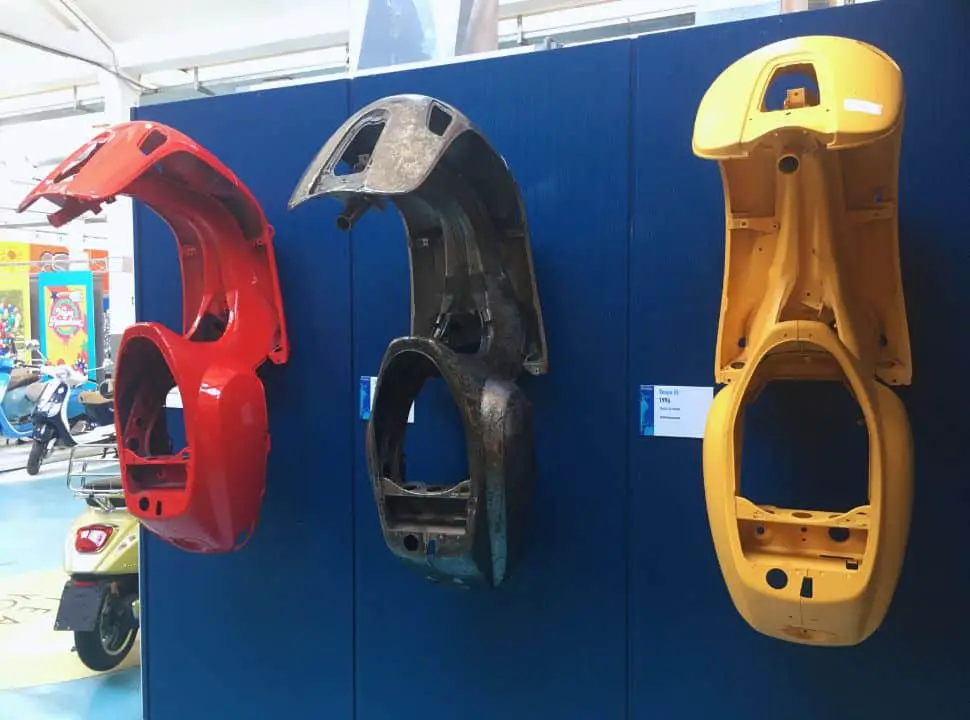
Throughout the Museum you can find many examples of the development of the Vespa.
Original sketches and engineering blueprints, pictures of the factory in the old days but also technical aspects of the engines.
Temporary Exhibitions
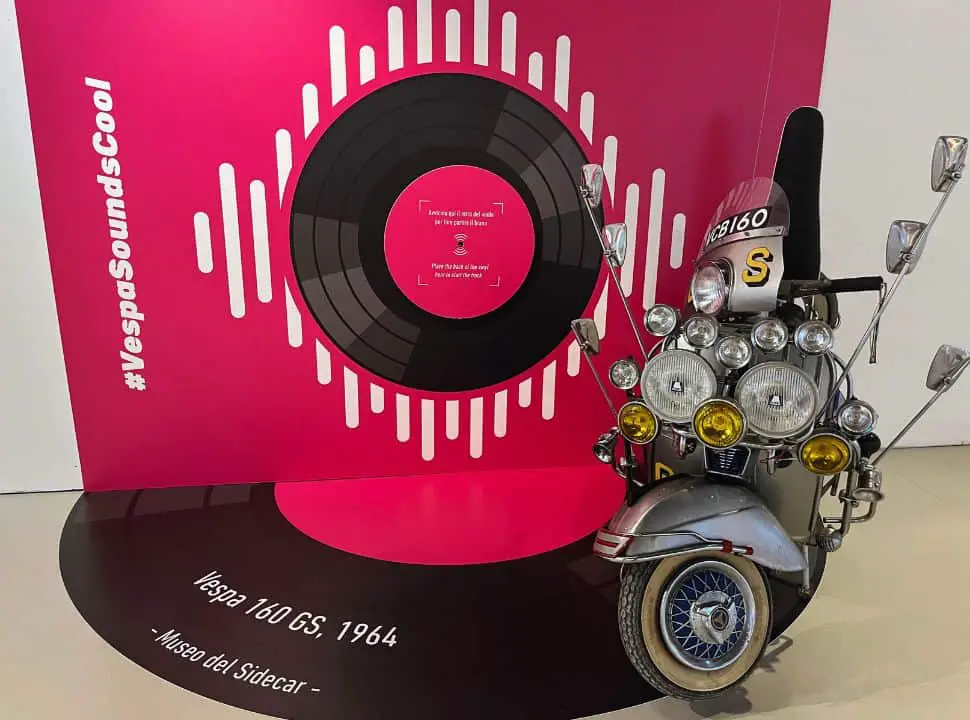
Besides the permanent collection, the Piaggio Foundation also organizes temporary exhibitions.
The Piaggio Foundation’s goal is to preserve the history of a company and its community. They want to teach young people the important values of creativity, innovation, and uniqueness. These are the values that make “made in Italy” successful.
Piaggio Museum Virtual Tour
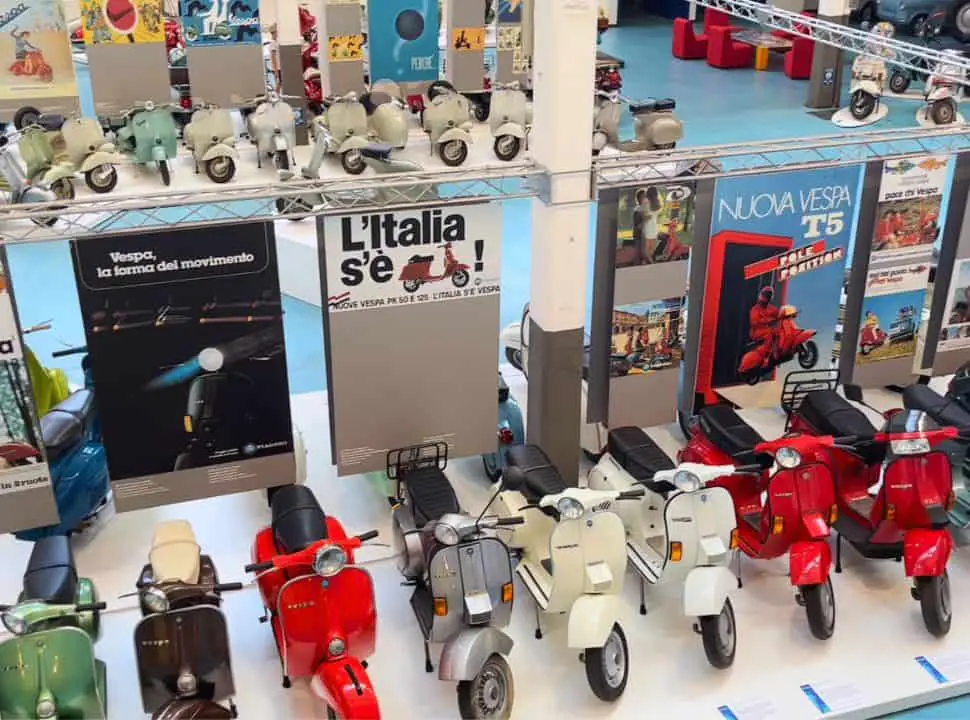
If you don’t have the chance to visit the amazing Piaggio Museum, then you can check it out virtually from anywhere in the world.
The virtual tour is pretty extensive, and you will get a great impression of the whole feel and look of the museum. What I find so great about this virtual option is that you can read the details about most vehicles or objects displayed in the museum.
So even for me, I like checking it out to read specific information again from my lazy chair 🙃.
Piaggio Museum Visitor Information
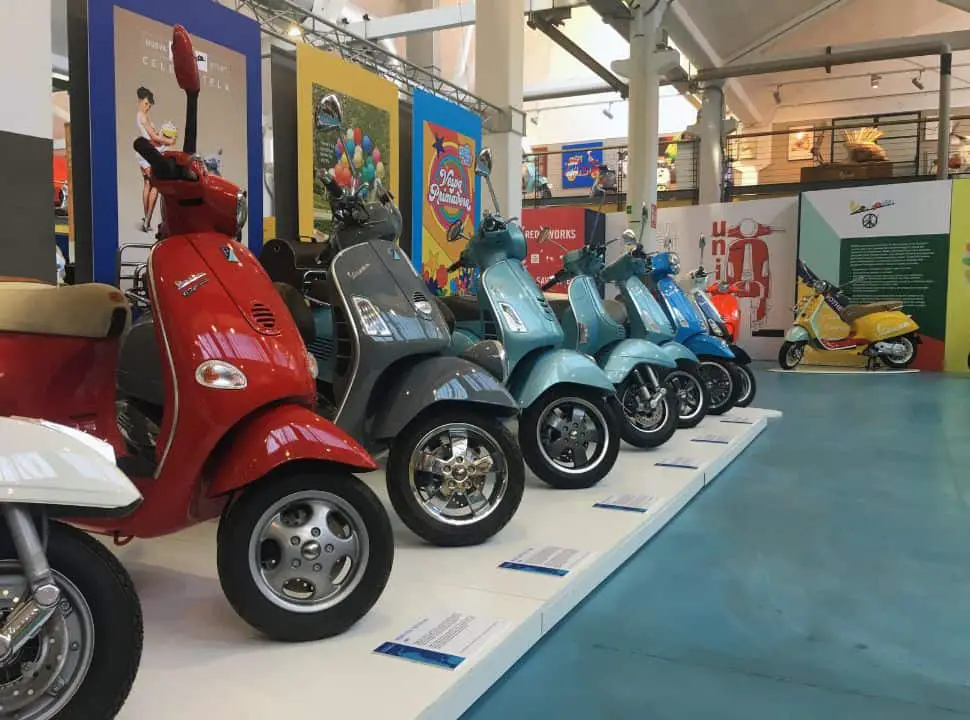
Opening Hours
- From Tuesday to Saturday, the second and the fourth Sunday of each month.
- From 9:30 till 17:30
60-minutes admission
You are allowed to visit the museum for 1 hour only (excl. the time browsing through the museum bookshop😊).
Admission is free however you can make a small contribution at the entrance. There is also the possibility of a guided tour (Italian or English), max 10 people €5 per person.
When booking on the official Piaggio Museum website you can choose the following options:
Morning
- First group: from 9.30 to 10.30
- Second group: from 11.30 to 12.30
Afternoon
- First group: from 14.00 to 15.00
- Second group: from 16.00 to 17.00
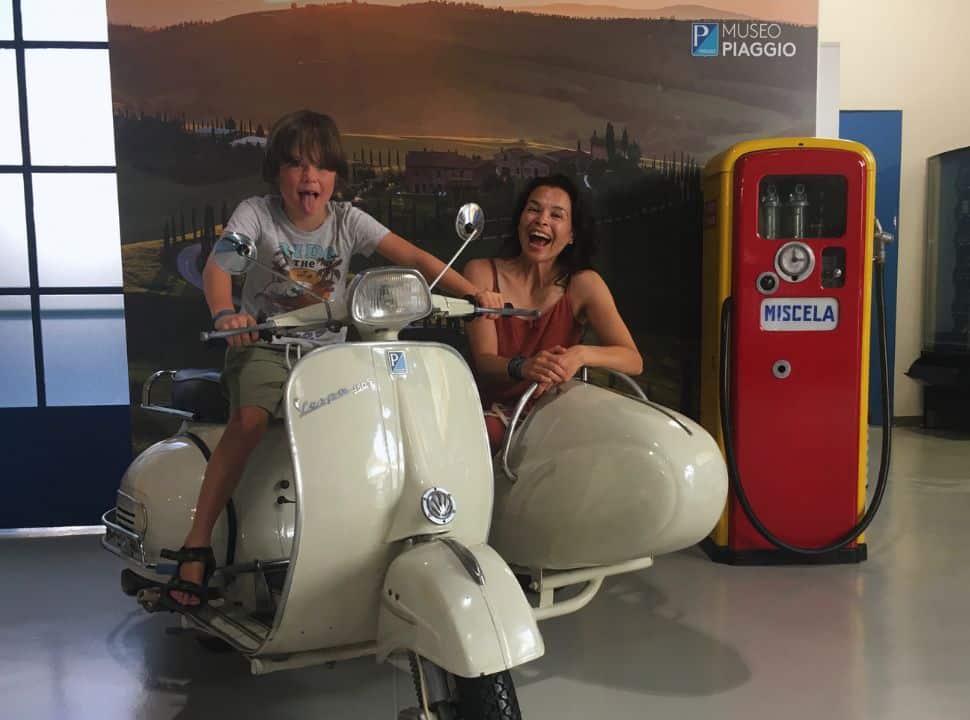
Is the Piaggio Museum worth visiting?
The Piaggio Museum is an amazing place, for Vespa fans and for those who love beautifully designed vehicles. We loved the fact that it was housed in the original factory of Paggio. It made the experience more unique.
Besides being fascinated by all the Vespa models, the museum has arranged perfectly everything in such as way that you can see the whole journey this scooter has undergone.
Pictures, stories, and marketing boards give an understanding of what was taking place at the time specific Vespa models were launched. It took us back into history.
As you can tell, we highly recommend visiting this museum in Pontedera. And while you are there, try to have delicious pasta at the restaurant ‘Pizzeria Osteria Pasquale’ just across the street at the traffic lights. It was one of the best we had.

More articles to read:
Can you rent a Vespa in Italy? Rentals & Essential Tips

